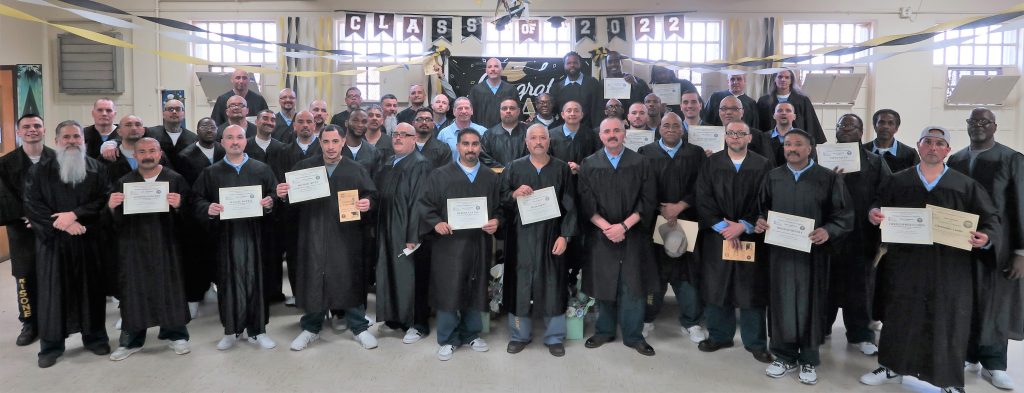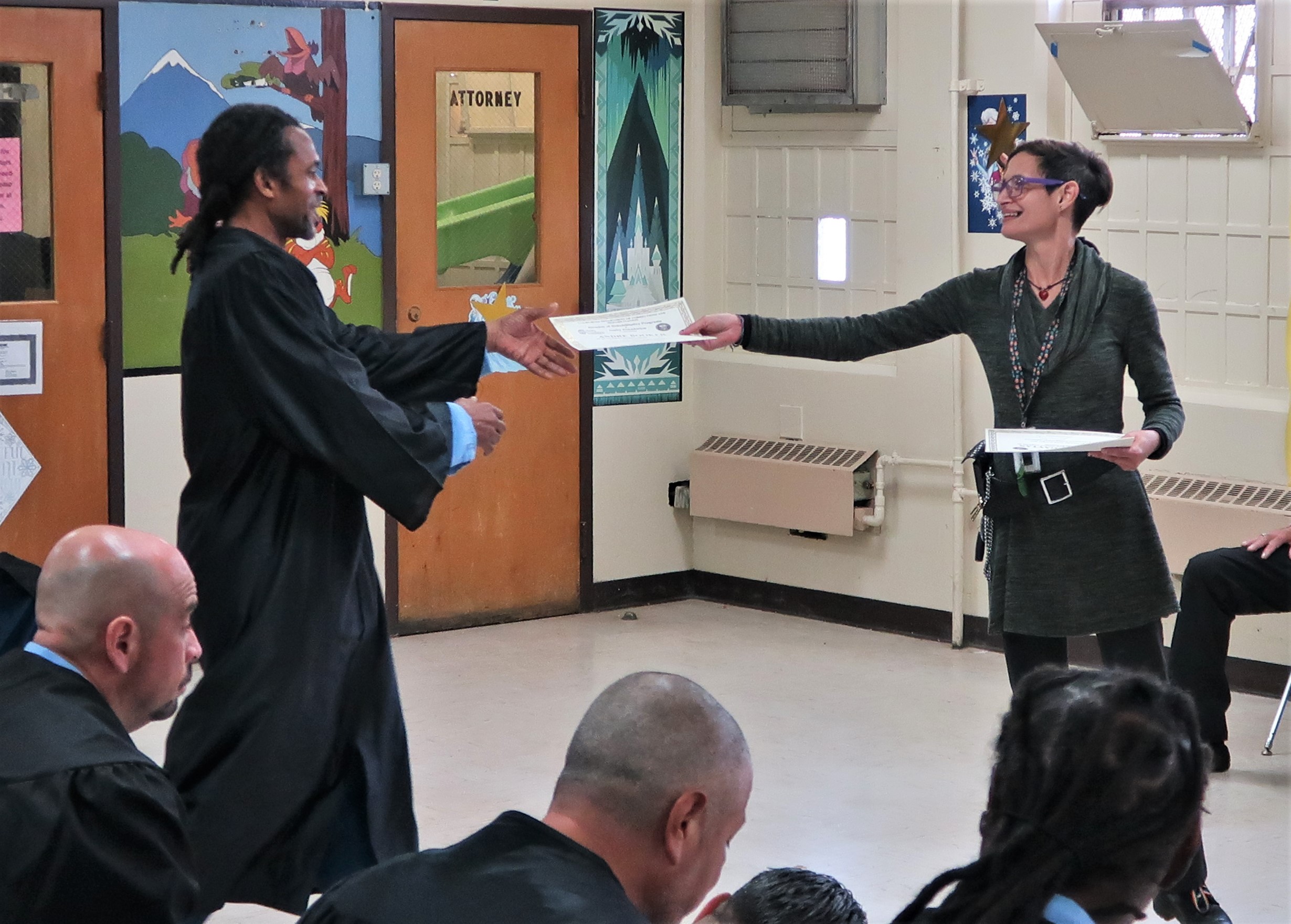Two separate education graduation ceremonies for 108 incarcerated people were held in mid-November at the Correctional Training Facility (CTF).
Friends and family of the graduates gathered with officials and CTF staff from to celebrate the the graduates’ accomplishments.
The graduates wore black caps and gowns during the ceremony.
They graduated the following programs:
Education program graduates
General Education Development (GED) – 43 diplomas
- Designed to prepare students from the ninth through the 12th-grade competency levels as determined by standardized testing and to prepare students to achieve a high school equivalency (HSE) certificate. The GED Test (General Education Development Test) is made up of four tests. These tests are designed to measure a student’s proficiency in standard high-school subjects. The GED Test requires students to demonstrate applied knowledge skills related to specific situations.
High school diploma program: 1 earned
- Students within 40 units of graduation and who have a 7.9 or above reading level, may participate in the program. To complete an HSD, the student must have been enrolled in an OCE HSD program and have completed a minimum of 10 semester credits; scored 80% or more on the class assignments/coursework; scored 80% or more on the final exam, and maintained at least an 80% attendance rate
College – AA/AS Degrees 29; BA Degrees 2
- The main goal of Post-Secondary and Continuing Education (PSCE) is to motivate students to question and critically think by providing them an understanding of their world and the necessary tools to succeed in whichever field they wish to pursue.
- PSCE provides students who have a verified high school diploma (HSD) or high school equivalency (HSE) with an opportunity to pursue study in higher education, earn a college degree, and pursue sentence reduction credits per the California Code of Regulations, Title 15. Students who possess a HSD or HSE are eligible to enroll in college courses.
Skilled trades graduates
Auto Body Repair – 1 certificate
- Certificated students are trained at the pre-apprentice to apprentice level and have the ability to be employed as automotive body and related repairers.
Auto Mechanics – 6 certificates
- Certificated students are trained at the pre-apprentice to apprentice level and have the ability to be employed as automotive service technicians and mechanics.
Carpentry – 11 certificates
- Carpentry is part of the NCCER Building and Trades and Construction Sector Industry. Certificated students are trained at the pre-apprentice to apprentice level and have the ability to be employed as: carpenters; construction laborers; drywall and suspended ceiling installers; tapers, carpentry helpers, and cabinet makers.
Electrical Works – 6 certificates
- Electrical (Construction and Repair) is part of the NCCER Building and Trades and Construction Sector Industry. Certificated students are trained at the pre-apprentice to apprentice level and have the ability to be employed as electricians and electrical installers and repair workers, and electrical helpers.
Masonry – 1 certificate
- Masonry is part of the NCCER Building and Trades and Construction Sector Industry. Certificated students are trained at the pre-apprentice to apprentice level and have the ability to be employed as brick masons and block masons; cement masons and concrete finishers; and construction helpers.
Plumbing – 6 certificates
- Plumbing (Construction and Repair) is part of the NCCER Building and Trades and Construction Sector Industry. Certificated students are trained at the pre-apprentice to apprentice level and have the ability to be employed as plumbers and plumbing helpers.
Welding – 2 certificates
- Welding is part of the NCCER Building and Trades and Construction Sector Industry. Certificated students are trained at the pre-apprentice to apprentice level and have the ability to be employed in the industry.
Submitted by Lt. Wil Landrum

Read more rehabilitation stories.
Follow CDCR on YouTube, Facebook, X (formerly Twitter). Listen to the CDCR Unlocked podcast.
